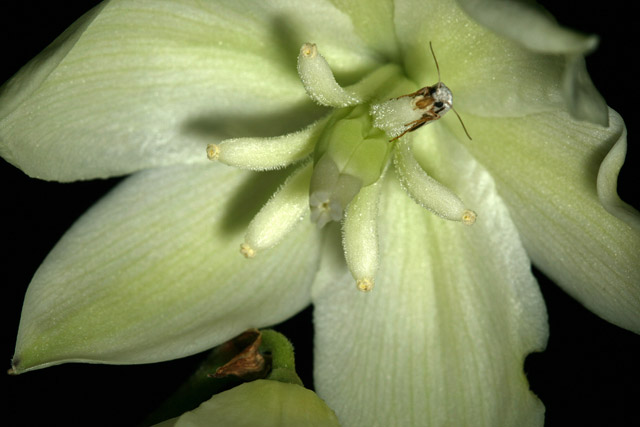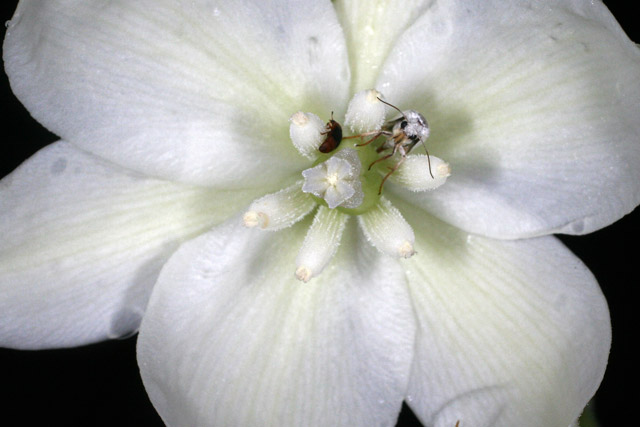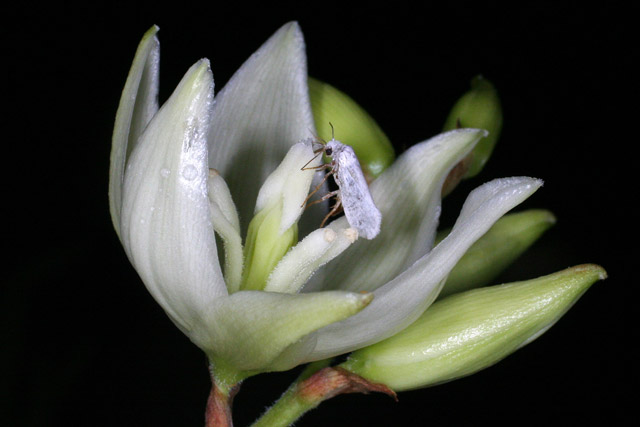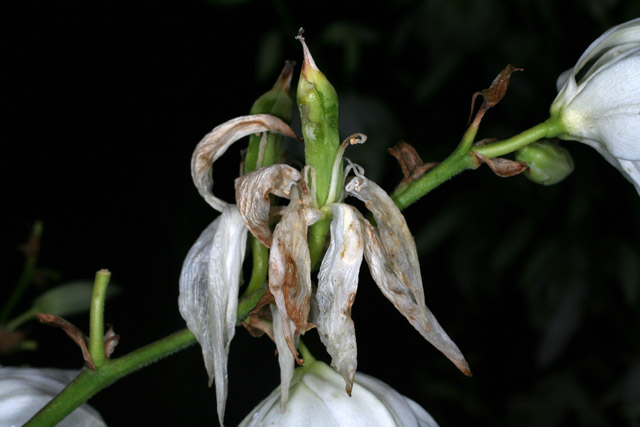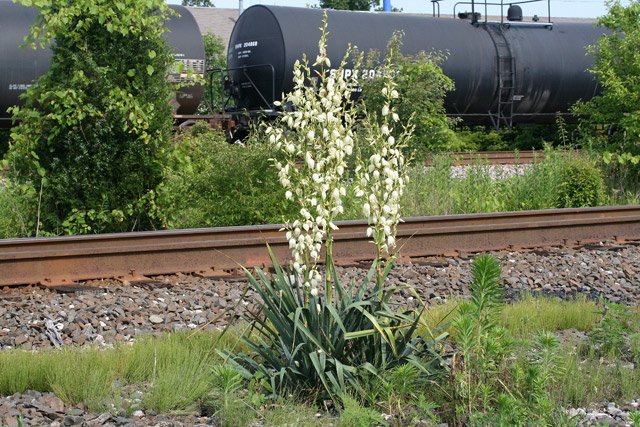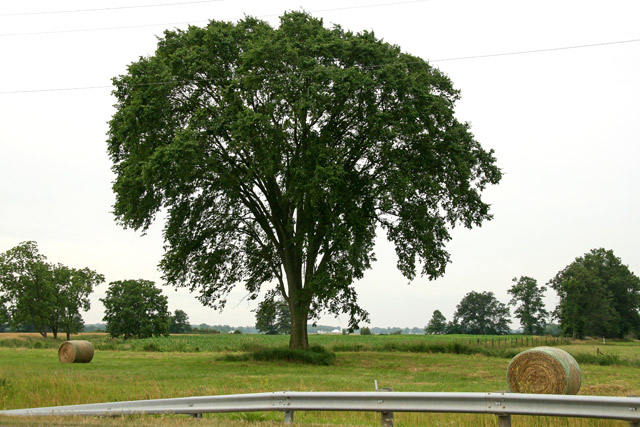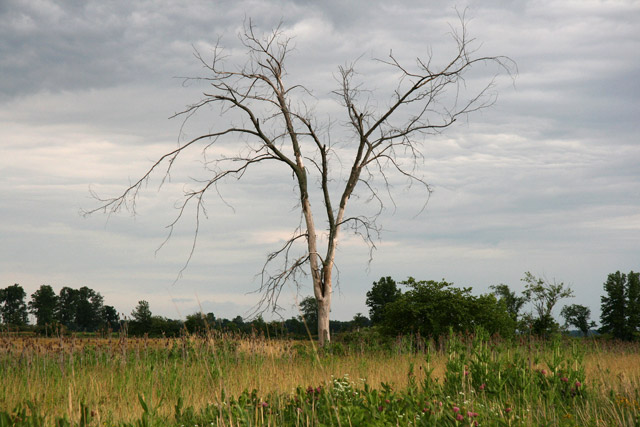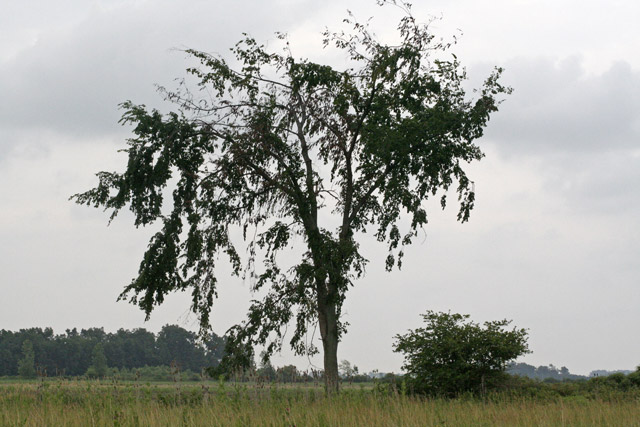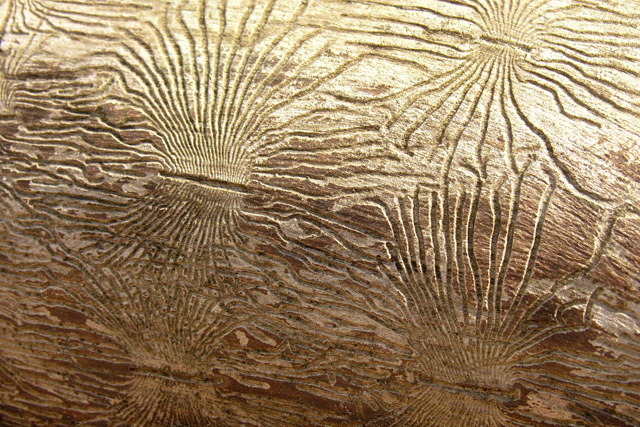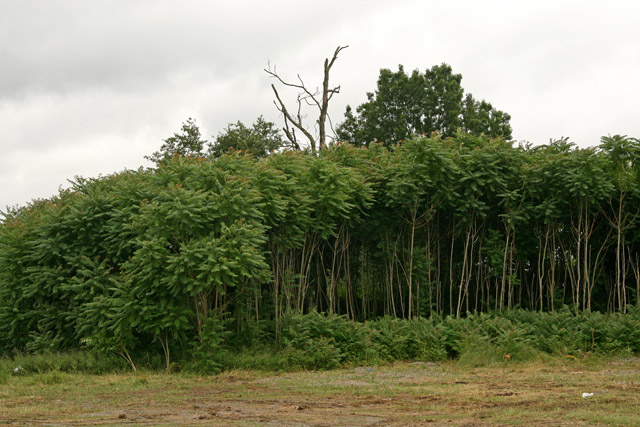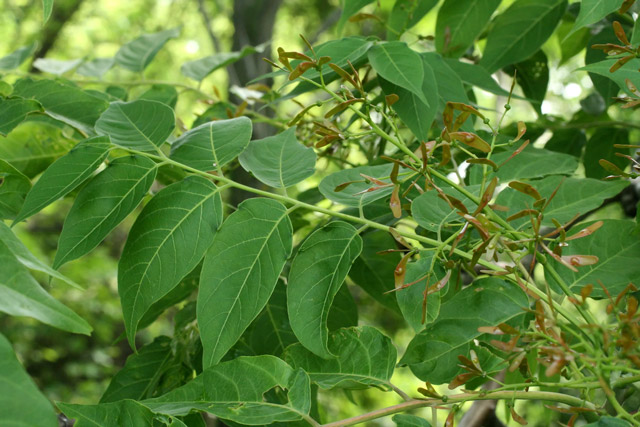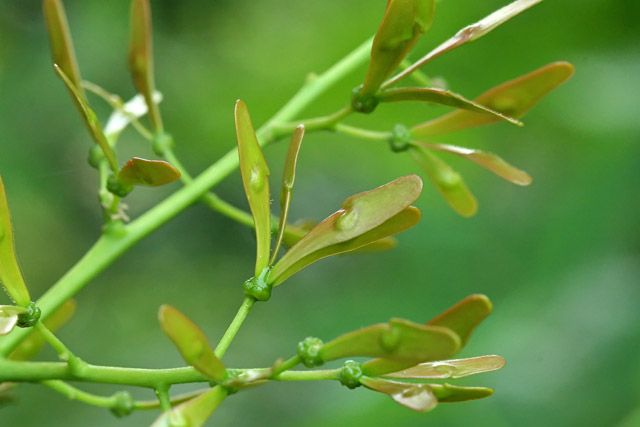

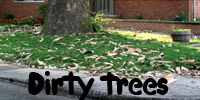
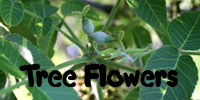
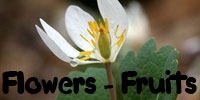
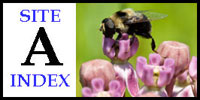 \
\ (Additional content at flickr Photostream and YouTube Channel)
If you have botany questions or comments please email BobK . Thanks!
Two floating-leaved aquatic plants,
and a sea monster (which turned out to be a carp).
July 8 and 10, 2008
Marion and Wyandot Counties, OH
and a sea monster (which turned out to be a carp).
July 8 and 10, 2008
Marion and Wyandot Counties, OH
Some aquatic plants are rooted in the mud
below the water, have flexuous stems that reach up to the surface, and
bear leaves that float like little carpets. Two wholly unrelated
floating-leaved plants that have a markedly similar overall aspect
are
water smartweed (Polygonum coccinium, family Polygonaceae) and
pondweed (Potamogeton natans, family Najadaceae).
The smartweed is growing in Bee Run Ditch, a tributary to the Olentangy (Whetstone) River on Nesbit Rd., Caledonia, Marion County, OH.
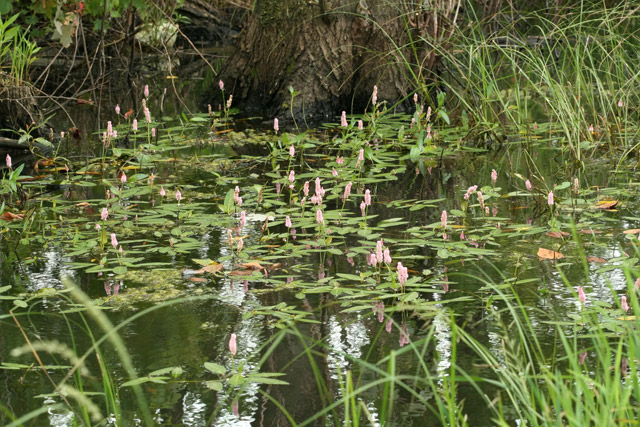
Water smartweed, July 8, 2008, Bee Run Ditch, Caledonia, Marion County, Ohio.
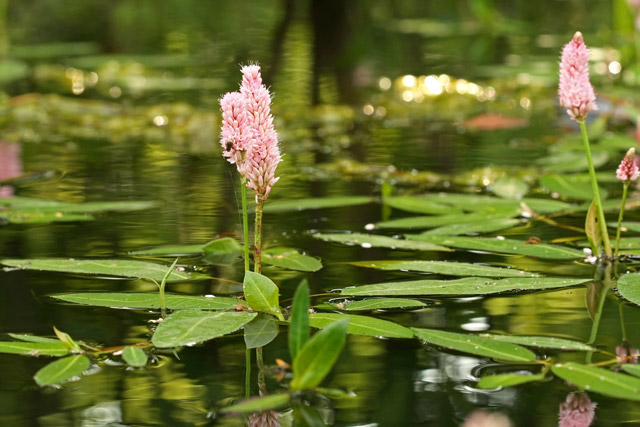
Water smartweed, July 8, 2008, Caledonia, Marion County, Ohio.
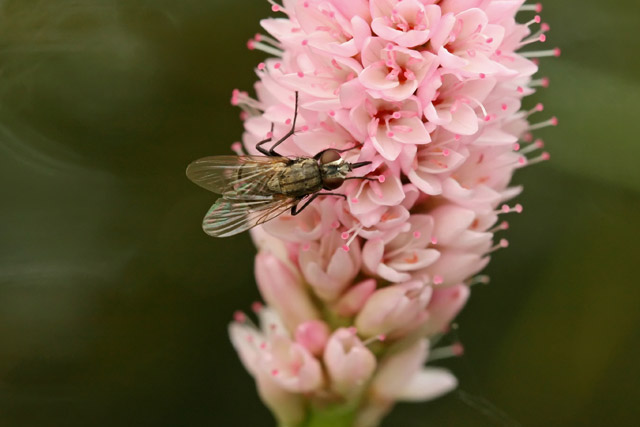
Water smartweed flowers, July 8, 2008, Caledonia, Ohio.
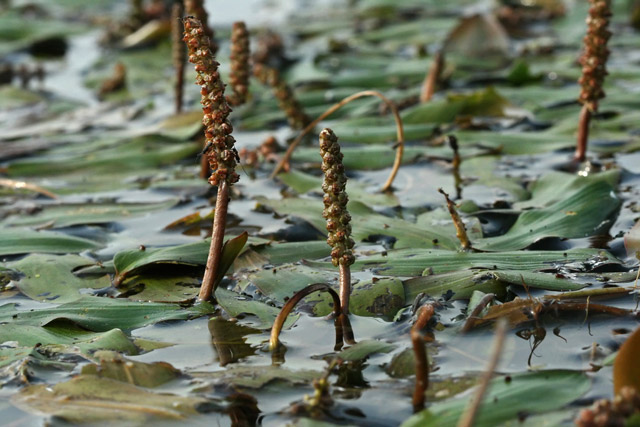
Floating pondweed flowering spikes, July 10, 2008, Killdeer Plains Wildlife Area, Wyandot County, Ohio.
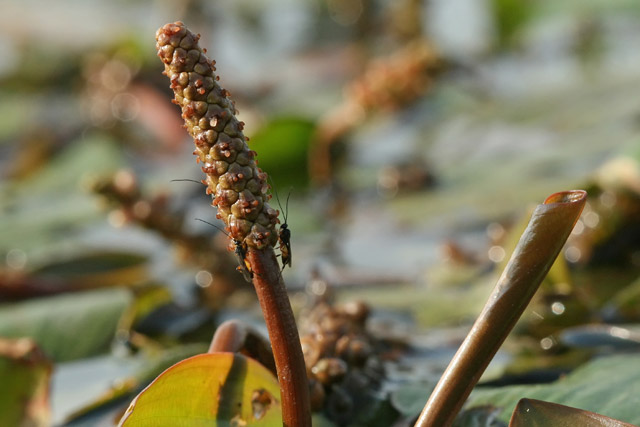
Floating pondweed flowering spike, Killdeer Plains Wildlife Area, July 10, 2008.
The smartweed is growing in Bee Run Ditch, a tributary to the Olentangy (Whetstone) River on Nesbit Rd., Caledonia, Marion County, OH.

Water smartweed, July 8, 2008, Bee Run Ditch, Caledonia, Marion County, Ohio.
Smartweeds (genus Polygonum)
aren't
particularly intelligent. Instead, the name refers to the sharply
peppery "smarting" taste of some species (not this one). Several
smartweed species produce abundant small seed-like fruits (achenes)
that are valuable for wildlife. Other smartweeds are weedy.

Water smartweed, July 8, 2008, Caledonia, Marion County, Ohio.
I don't know whether water smartweed is
particularly adapted for fly pollination, but there are several flies,
and no other types of insects, on the flowers today.

Water smartweed flowers, July 8, 2008, Caledonia, Ohio.
About 20 miles northwest from the
water smartweed, in a large impoundment at the Killdeer Plains Wildlife
Area, Wyandot County, a more drab but probably more valuable wildlife
food plant is amazingly abundant. It's floating pondweed, Potamgeton
natans (family Najadaceae).
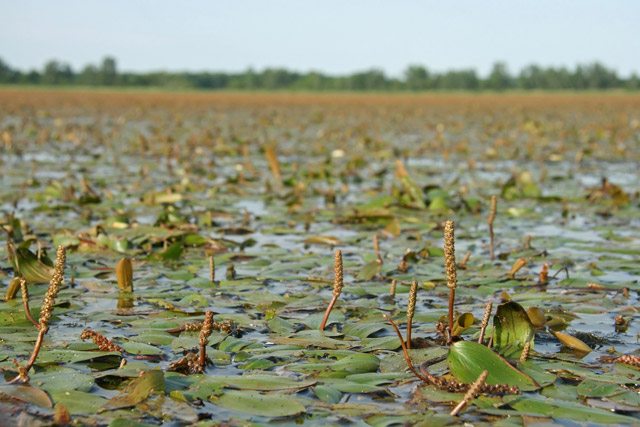
Large impoundment at Killdeer Plains Wildlife Area, Wyandot County, Ohio,
where floating pondweed is remarkably abundant, July 10, 2008.

Large impoundment at Killdeer Plains Wildlife Area, Wyandot County, Ohio,
where floating pondweed is remarkably abundant, July 10, 2008.

Floating pondweed flowering spikes, July 10, 2008, Killdeer Plains Wildlife Area, Wyandot County, Ohio.
Pondweed flowers are presented on an
upright spike, similar to those of the smartweed. Again, there are
insects --stoneflies this time -- associated with the flowers that
may
or may not be important pollinators.

Floating pondweed flowering spike, Killdeer Plains Wildlife Area, July 10, 2008.
After pollination and ripening of the
seed-like fruits (achenes), pondweed spikes lay down, immersing
the
fruits in the water to effect hydrochory (water dispersal).
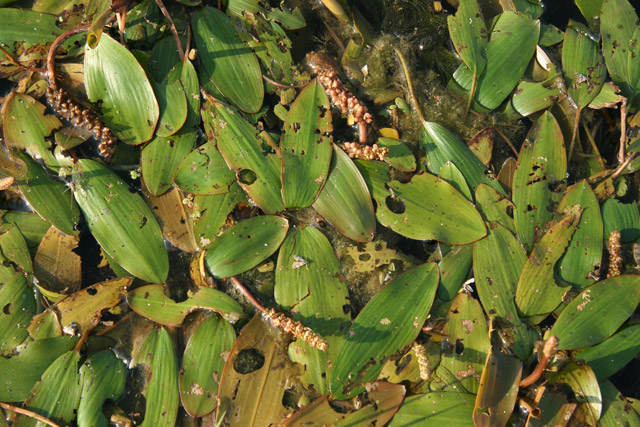

Scattered here and there in the
impoundment are large-ish (estimated 1-2 feet) creatures noisily
chomping cow-like on the pondweed. They are smooth and dark,
apparently (but impossibly) lacking either fur or fins. The
amorphous head
region seems to project well past the eyes. What are these animals?
Mini-manatees? Space creatures?
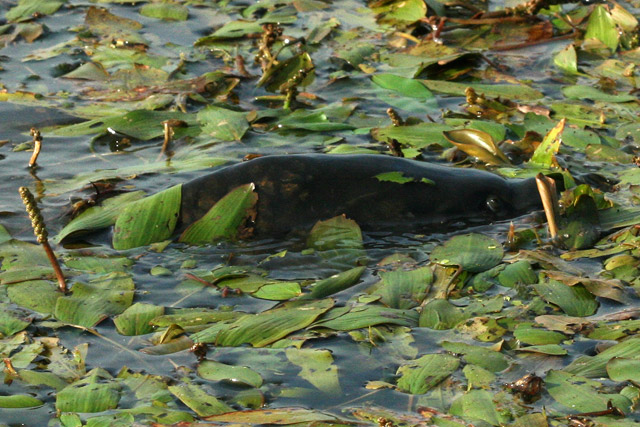
Unidentfied aquatic grazing herbivore, July 10, 2008, Killdeer Plains Wildliife Area, Wyandot County, Ohio.

Unidentfied aquatic grazing herbivore, July 10, 2008, Killdeer Plains Wildliife Area, Wyandot County, Ohio.
Today's paper tells us that the smart
sensible people who are running our transportion system evacuated a
plane because there was a tick on it. And they have no idea how a tick
could have gotten onto an airplane.

Below are some ticks found on or near a
botanical enthusiast living in Columbus, Ohio, just a few hours after
spending some time outdoors on Planet Earth the same day that
article appeared. Should he (and
all hunters, fishers, hikers, etc.) be placed on the "no-fly list"?

Ticks...I have no idea where they came from!
Sullivant's milkweed (Asclepias
sullivantii,
family Asclepiadaceae), is an uncommon prairie species. Even though we
are at the eastern edge of its range, the species was discovered in
Ohio. The discovery was made by William Starling Sullivant, a
prominent 19th century American botanist who was mainly into mosses.
His was an important family locally. William's father
was Lucas Sullivant, a land
surveyor and developer who, in 1797, founded Franklinton, the
first big settlement in the area (later annexed by Columbus).
At the Greenlawn Cemetery in Columbus, here is the Sullivant family burial site, showing the graves of (left to right): father Lucas, William's beloved wife Eliza who was herself an accomplished botanist (she worked alongside her husband and made illustrations for his moss books), and William.

Sullivant family burial site at Greenlawn Cemetery, October, 2004
Milkweed flowers are highly modified. The buds are enveloped by the petals. The major pollinator-attractive (and also the reward-providing) portion of the flower is an elaborate set of tubular upward extensions of the petals collectively termed the "corona."
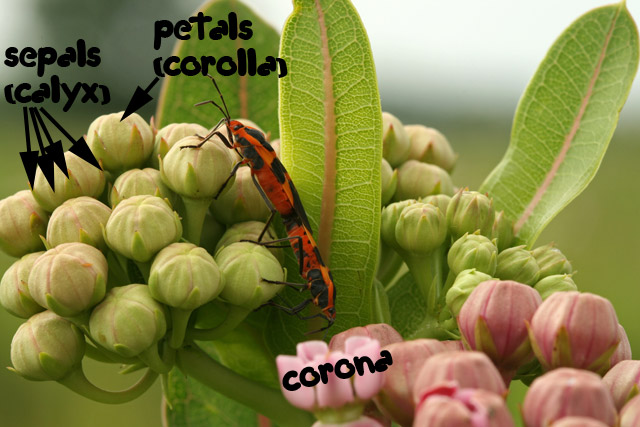
Sullivant's milkweed umbels in the bud stage (except for one flower).
Killdeer Plains Wildlife Area, July 5, 2008.
At the Greenlawn Cemetery in Columbus, here is the Sullivant family burial site, showing the graves of (left to right): father Lucas, William's beloved wife Eliza who was herself an accomplished botanist (she worked alongside her husband and made illustrations for his moss books), and William.

Sullivant family burial site at Greenlawn Cemetery, October, 2004
Eliza's monument is particularly
interesting from a botanical perspective. The plant she is festooned by
is another Sullivant discovery, one with a doubly commemorative name:
the woodland herb Sullivantia sullivantii (family
Saxifragaceae).

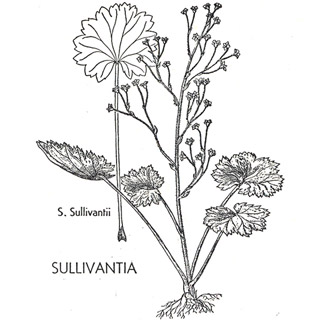
Left: Eliza Sullivant monument at Greenlawn Cemetery. Right: illustration of Sullivantia sulivantii from Flora of West Virginia (Strausbaugh and Core).
The milkweeds that bear Sullivant's name are flowering profusely. The Killdeer Plains population is Ohio's largest.
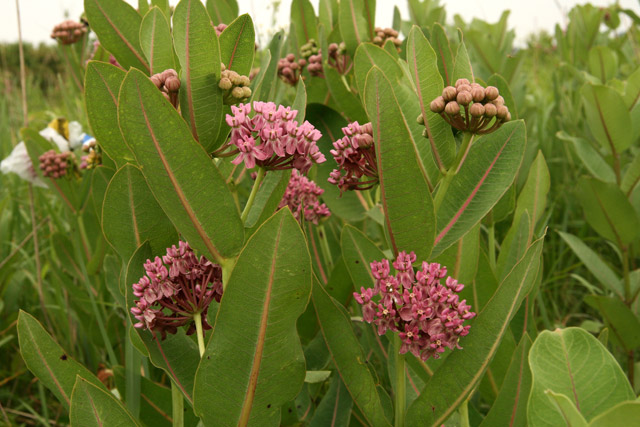
Sullivant's milkweed, Killdeer Plains Wildlife Area, July 4, 2008


Left: Eliza Sullivant monument at Greenlawn Cemetery. Right: illustration of Sullivantia sulivantii from Flora of West Virginia (Strausbaugh and Core).
The milkweeds that bear Sullivant's name are flowering profusely. The Killdeer Plains population is Ohio's largest.

Sullivant's milkweed, Killdeer Plains Wildlife Area, July 4, 2008
Milkweeds are avidly visited by a variety
of insects. According to the literature, both butterflies and bees are
common as pollinators, but at Killdeer it's honeybees, and to a
lesser extent bumblebees, that seem to do it all. Butterflies are
scarce and fleeting at Killdeer. (Butterflies just flutter by.)
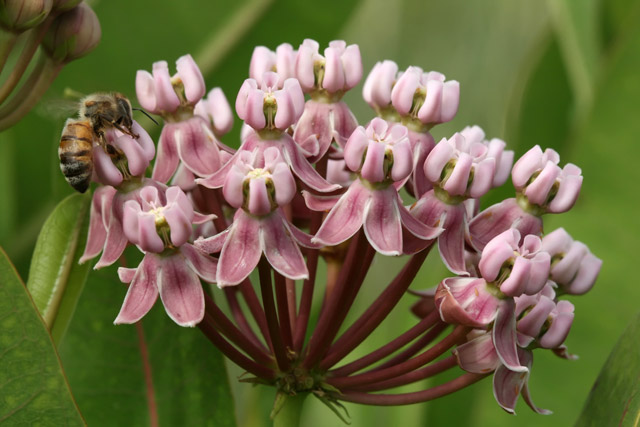
Sullivant's milkweed visited by honeybee, Killdeer Plains Wildlife Area, July 5, 2008.

Sullivant's milkweed visited by honeybee, Killdeer Plains Wildlife Area, July 5, 2008.
Milkweed flowers are highly modified. The buds are enveloped by the petals. The major pollinator-attractive (and also the reward-providing) portion of the flower is an elaborate set of tubular upward extensions of the petals collectively termed the "corona."

Sullivant's milkweed umbels in the bud stage (except for one flower).
Killdeer Plains Wildlife Area, July 5, 2008.
While
blooming, milkweed petals are spread sharply downwards,
concealing the sepals. The individual units of the corona are the
"hoods," cup-like structures that serve as nectar basins,
providing a
tremendous food resource for a variety of insects that come and avidly
drink from them.
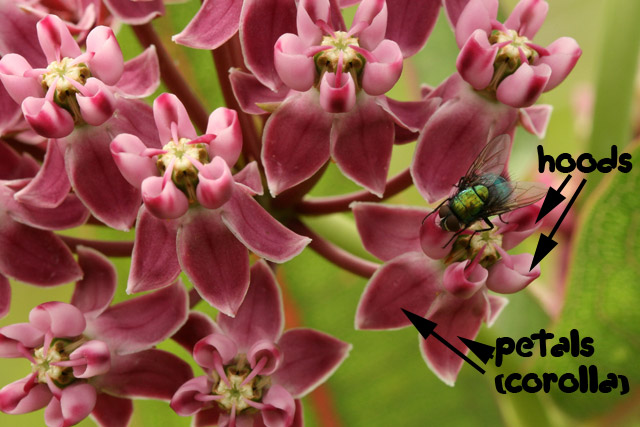
Fly visiting Sullivant's milkweed, Killdeer Plains Wildlife Area. July 5, 2008.
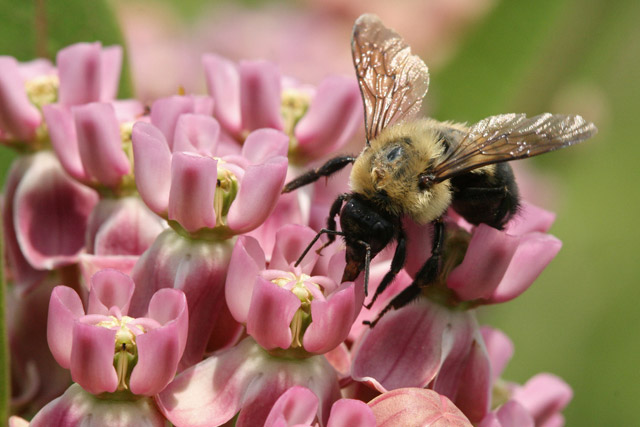
Bumblebee drinking milkweed nectar, Killdeer Plains Wildlife Area, July 5, 2008.
Milkweed
flower structure and related pollination are unique. They're
famous for standing along with orchids as the only plants that
distribute their pollen not as powdery individual
grains, but all at once in special adherent packets called "pollinia." Milkweed
pollinia are arranged in pairs. The pollinia are tethered together in a
wishbone-like
paired arangement called a pollinarium that has a sticky apex
called a
"corpusculum."
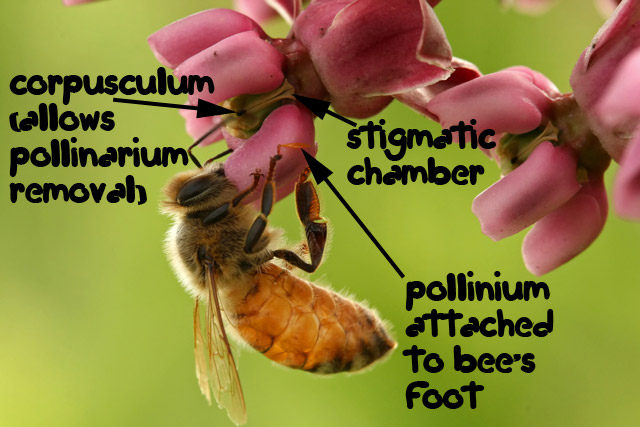
Honeybee drinking nectar from Sullivant's milkweed, Killdeer Plains Wildlife Area, July 5, 2008.
A bee sipping nectar is often
forced to position her feet between hoods, and, as she pulls a leg
upwards, inadvertently hooks a corpusculum (each corpusculum has a
narrow groove
that a claw can slip into) and withdraws a polliniarium. It
remains
attached to her foot until, during a visit to a subsequent flower, if a
pollinium is positioned just right (lengthwise to the groove and
entering at a certain angle), it slips into the stigmatic
chamber, accomplishing pollination. It requires a
precise arrangement, and it seems amazing that it ever works, but
apparently it does; milkweeds set fruit abundantly.
Roses (genus Rosa
in the family Rosaceae) display many of the traits of primitive
flowers, i.e., those that most resemble a branch with leaves, because
that's basically what a flower is: a short branch with highly modified
leaves. Rose flowers have separate, not fused, petals. Also
there are numerous stamens and carpels (seed bearing units)
arranged in a spiral fashion.
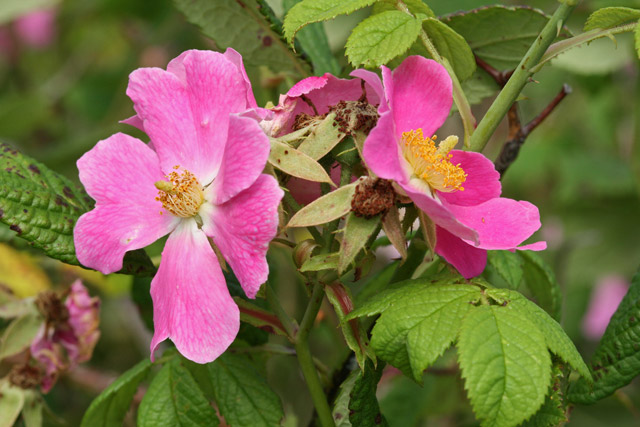
Prairie rose, Killder Plains Wildlife Area, July 4, 2008, Marion County, OH.

Prairie rose, Killder Plains Wildlife Area, July 4, 2008, Marion County, OH.
Unlike buttercups
(family Ranuculaceae) which display all the traits of primitive flowers
including being hypogynous, i.e., the sepal, petals
and stamens are separately attached below the ovary, roses have one
more advanced trait in that they are perigynous.
Roses have a hypanthium, also called a "floral cup," which is a
cup-like structure formed by the fusion of the the lower portions of
the sepals, and stamens. The conspicuous portions of the sepals, petals
and stamens rise off the flower at the upper edge of the hypanthium.
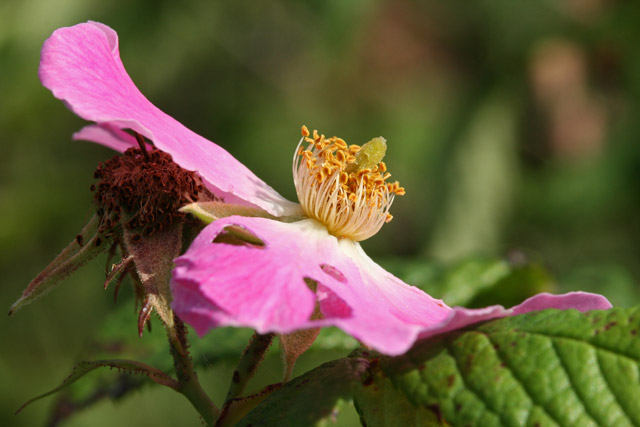

Prairie rose
flower, July 5, 2008, Killdeer Plains Wildlife Area, Marion County OH.
Mouseover to see the flower:
split and split/labeled
Mouseover to see the flower:
split and split/labeled
What
is traditionally refered to as the rose fruit is an unusual structure
called the "rose hip." The hip is actually the expanded and slightly
fleshy hypanthium that envelopes the true fruits --numerous one-seeded
fruits called "achenes" that are generally thought of as being seeds.
Rose hips are noted to be a great source of vitamin C.
Yuccas
(genus Yucca, family Liliaceae) are famous for
being partners in an elegant mutualism with a moth. The moth, Tegeticula
yuccasella and related species,
is the sole pollinator of the yucca flowers. But instead of
offering the moth a food reward such as nectar (there is none) or
pollen (the moth has no use for it), the yucca plant instead provides a
nice place for the next generation of moths to begin their lives.
The moths are small, elongate, and ghostly white. They can be seen fluttering about yucca plants at night when they bloom in late June-early July. A female moth that has mated and can thus lay fertile eggs, visits a yucca flower and removes a ball of pollen, holding it in specially modified mouthparts. She flies with the pollen to another flower, ideally on another plant, where she inserts some eggs into the ovary of that new flower, and immediately thereafter pollinates the flower. This is accomplished by stuffing the pollen into a special receptive recess (the stigma) atop the pistil where she has just laid her eggs.
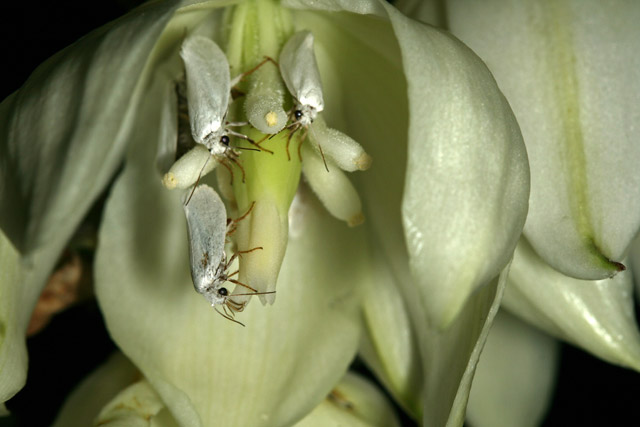
Yucca moths on yucca flower, along railroad tracks, Indianola Avenue, Columbus, OH July 1, 2008.
The moths are small, elongate, and ghostly white. They can be seen fluttering about yucca plants at night when they bloom in late June-early July. A female moth that has mated and can thus lay fertile eggs, visits a yucca flower and removes a ball of pollen, holding it in specially modified mouthparts. She flies with the pollen to another flower, ideally on another plant, where she inserts some eggs into the ovary of that new flower, and immediately thereafter pollinates the flower. This is accomplished by stuffing the pollen into a special receptive recess (the stigma) atop the pistil where she has just laid her eggs.

Yucca moths on yucca flower, along railroad tracks, Indianola Avenue, Columbus, OH July 1, 2008.
American
elm is an easy
tree to recognise
by its silhouette. According to William Harlow in "Trees of
the
Northeastern United States," elm resembles a wineglass, a
feather
duster, and/or a colonial lady upside-down. It's also well known for
being susceptible to two devastating diseases with very similar
effects:
Dutch elm disease (DED) and phloem necrosis, so travelers in open
country around central Ohio tend to see a lot of shattered
wineglasses, feather dusters that bit the dust and colonial
ladies
rightside-up. Here at Killdeer Plains
Wildlife Area in extreme northern Marion County an elm died
recently.
Two
weeks ago the
ultimate weed tree, tree-of-heaven, Ailanthus altissima,
was in flower. It was difficult to visualize those blooms developing
into the familiar one-seeded winged fruits (samaras). This week the
trees are much further
along, and it is now plainly evident that they will develop into
samaras.
